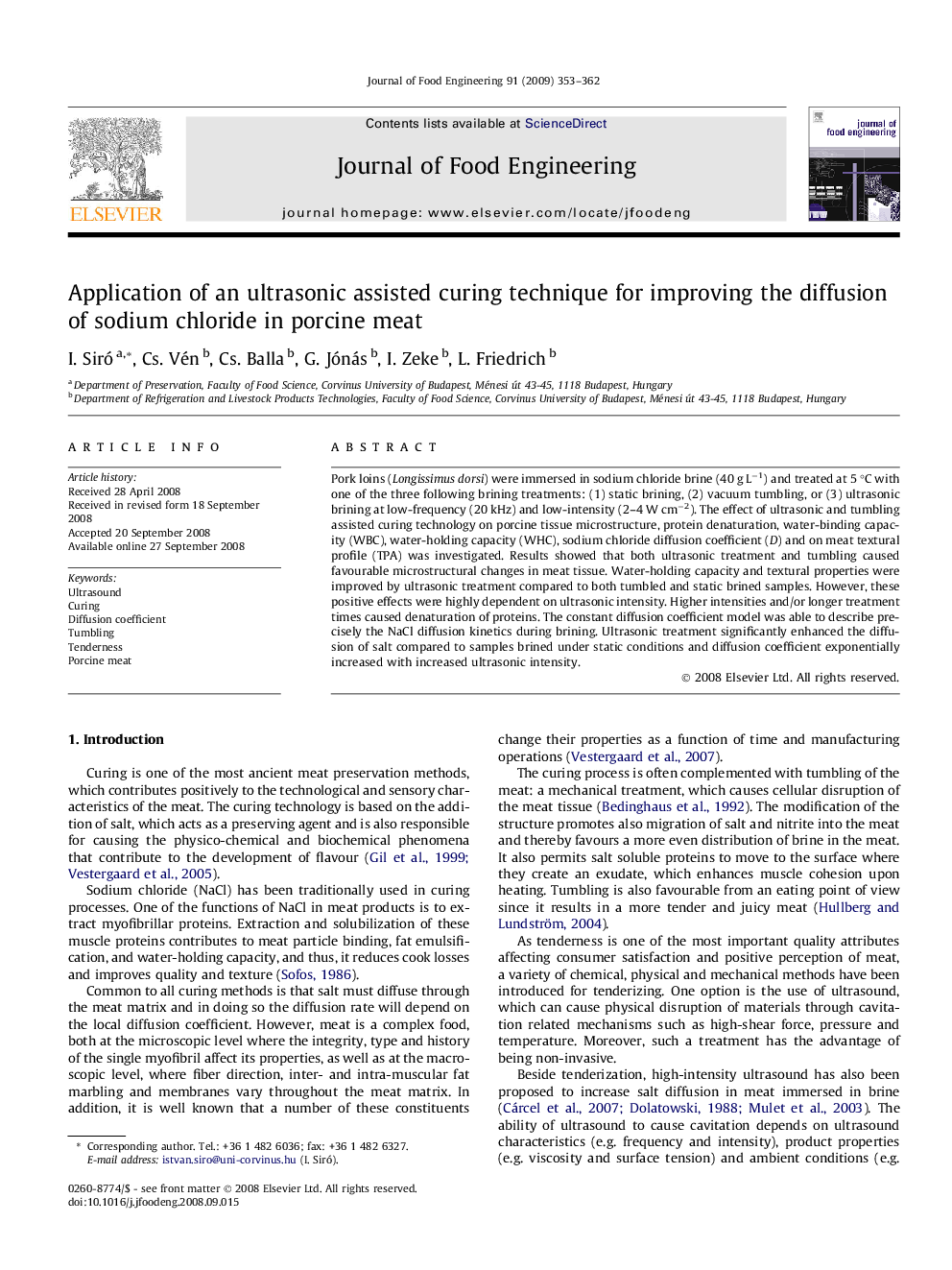| Article ID | Journal | Published Year | Pages | File Type |
|---|---|---|---|---|
| 224941 | Journal of Food Engineering | 2009 | 10 Pages |
Pork loins (Longissimus dorsi) were immersed in sodium chloride brine (40 g L−1) and treated at 5 °C with one of the three following brining treatments: (1) static brining, (2) vacuum tumbling, or (3) ultrasonic brining at low-frequency (20 kHz) and low-intensity (2–4 W cm−2). The effect of ultrasonic and tumbling assisted curing technology on porcine tissue microstructure, protein denaturation, water-binding capacity (WBC), water-holding capacity (WHC), sodium chloride diffusion coefficient (D) and on meat textural profile (TPA) was investigated. Results showed that both ultrasonic treatment and tumbling caused favourable microstructural changes in meat tissue. Water-holding capacity and textural properties were improved by ultrasonic treatment compared to both tumbled and static brined samples. However, these positive effects were highly dependent on ultrasonic intensity. Higher intensities and/or longer treatment times caused denaturation of proteins. The constant diffusion coefficient model was able to describe precisely the NaCl diffusion kinetics during brining. Ultrasonic treatment significantly enhanced the diffusion of salt compared to samples brined under static conditions and diffusion coefficient exponentially increased with increased ultrasonic intensity.
